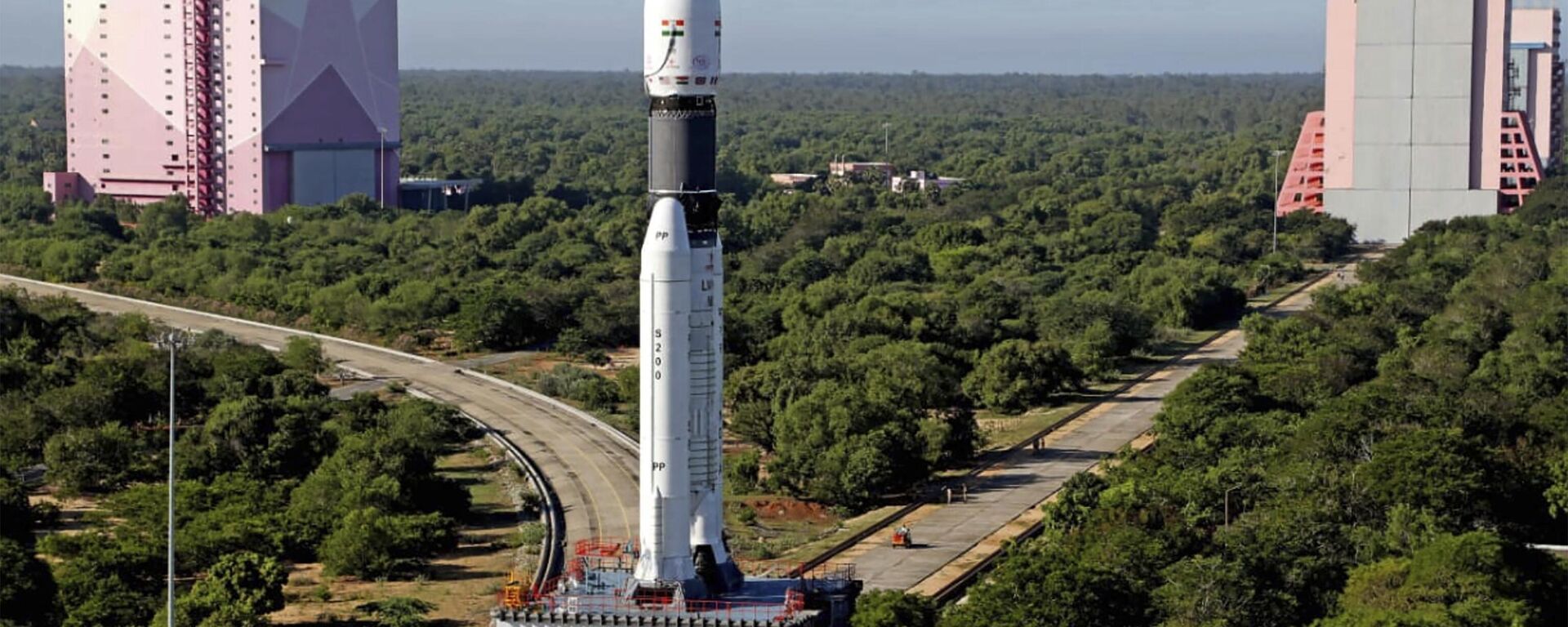https://sputniknews.in/20240429/isro-carried-out-23-satellite-saving-collision-avoidance-manoeuvres-in-2023-7243053.html
ISRO Carried Out 23 Satellite-Saving Collision Avoidance Manoeuvres in 2023
ISRO Carried Out 23 Satellite-Saving Collision Avoidance Manoeuvres in 2023
Sputnik India
In 2023, ISRO witnessed a rise in the number of collision avoidance maneuvers (CAMs) carried out by the agency, the report said.
2024-04-29T18:59+0530
2024-04-29T18:59+0530
2024-04-29T18:59+0530
science & tech
indian space research organisation (isro)
science & tech
space satellite
space industry
space exploration
space rocket
international space station (iss)
multiple rocket launcher
chandrayaan
https://cdn1.img.sputniknews.in/img/07e7/07/06/2876410_2:0:2999:1686_1920x0_80_0_0_f6777fd53506213344fbaa9937ee6f71.jpg
The Indian Space Research Organisation (ISRO) says it carried out 23 collision avoidance manoeuvres (CAM) to safeguard satellites in 2023.The incidents were detailed in the recently-released the Indian Space Situational Assessment Report (ISSAR).ISRO received approximately 137,565 close approach alerts from the US Space Command, of which 3,033 involved satellites passing within 1 km of each other, the report said.The manoeuvres were carried out to prevent potential collisions between satellites.The rapidly-increasing number of satellites in space presents unprecedented challenges for the management of space traffic, especially due to the lack of an internationally-recognized framework for effectively regulating and navigating Earth's crowded orbits.The problem requires satellite operators to work together in ad-hoc coordination to address potential conflicts. However, the task is becoming more intricate due to the overcrowded nature of popular orbital regimes.Last year saw a rise in the number of collision avoidance manoeuvres (CAMs) carried out by ISRO, although no specific interventions were required for high-profile missions like Chandrayaan-3 and Aditya-L1, the report said.New space ventures like mega constellations, space tourism and extended human presence beyond Earth are increasing the risk of collisions and space debris.The report also emphasized the remarkable re-entry of eight Indian satellites. Among them, the controlled descent of Megha-tropiques-1 stands out as a feat achieved through a rigorous de-orbiting exercise.Moreover, 82 rocket bodies have been placed into orbit by Indian launches last year, with 52 fragments of the PSLV-C3 still orbiting following an accidental breakup in 2001, the report said.
https://sputniknews.in/20240326/isro-makes-history-by-successfully-completing-zero-debris-orbital-mission---6948505.html
international space station (iss)
Sputnik India
feedback.hindi@sputniknews.com
+74956456601
MIA „Rossiya Segodnya“
2024
Sangeeta Yadav
https://cdn1.img.sputniknews.in/img/07e6/0c/0f/110602_0:0:641:640_100x100_80_0_0_c298016a79eb02ef8caa9d1f688c12a5.jpg
Sangeeta Yadav
https://cdn1.img.sputniknews.in/img/07e6/0c/0f/110602_0:0:641:640_100x100_80_0_0_c298016a79eb02ef8caa9d1f688c12a5.jpg
News
en_IN
Sputnik India
feedback.hindi@sputniknews.com
+74956456601
MIA „Rossiya Segodnya“
Sputnik India
feedback.hindi@sputniknews.com
+74956456601
MIA „Rossiya Segodnya“
Sangeeta Yadav
https://cdn1.img.sputniknews.in/img/07e6/0c/0f/110602_0:0:641:640_100x100_80_0_0_c298016a79eb02ef8caa9d1f688c12a5.jpg
isro, save satellites, collision avoidance manoeuvres, cams, indian space research organisation (isro), indian space situational assessment report (issar), us space command, us space command, satellites in space, space traffic, internationally recognized framework, satellite operators, orbital regimes, chandrayaan-3, aditya-l1, mega constellations, space tourism, space debris, safety, sustainability, megha-tropiques-1, de-orbiting, pslv-c3
isro, save satellites, collision avoidance manoeuvres, cams, indian space research organisation (isro), indian space situational assessment report (issar), us space command, us space command, satellites in space, space traffic, internationally recognized framework, satellite operators, orbital regimes, chandrayaan-3, aditya-l1, mega constellations, space tourism, space debris, safety, sustainability, megha-tropiques-1, de-orbiting, pslv-c3
ISRO Carried Out 23 Satellite-Saving Collision Avoidance Manoeuvres in 2023
2023 say a rise in the number of collision avoidance manoeuvres (CAMs) carried out by the Indian space agency, the report said.
The Indian Space Research Organisation (ISRO) says it carried out 23 collision avoidance manoeuvres (CAM) to safeguard satellites in 2023.
The incidents were detailed in the recently-released the Indian Space Situational Assessment Report (ISSAR).
ISRO received approximately 137,565 close approach alerts from the US Space Command, of which 3,033 involved satellites passing within 1 km of each other, the report said.
The manoeuvres were carried out to prevent potential collisions between satellites.
The rapidly-increasing number of satellites in space presents unprecedented challenges for the management of space traffic, especially due to the lack of an internationally-recognized framework for effectively regulating and navigating Earth's crowded orbits.
The problem requires satellite operators to work together in ad-hoc coordination to address potential conflicts. However, the task is becoming more intricate due to the overcrowded nature of popular orbital regimes.
Last year saw a rise in the number of collision avoidance manoeuvres (CAMs) carried out by ISRO, although no specific interventions were required for high-profile missions like
Chandrayaan-3 and
Aditya-L1, the report said.
New space ventures like mega constellations, space tourism and extended human presence beyond Earth are increasing the risk of collisions and space debris.
The report also emphasized the remarkable re-entry of eight Indian satellites. Among them, the controlled descent of Megha-tropiques-1 stands out as a feat achieved through a rigorous de-orbiting exercise.
Moreover, 82 rocket bodies have been placed into orbit by Indian launches last year, with 52 fragments of the PSLV-C3 still orbiting following an accidental breakup in 2001, the report said.




